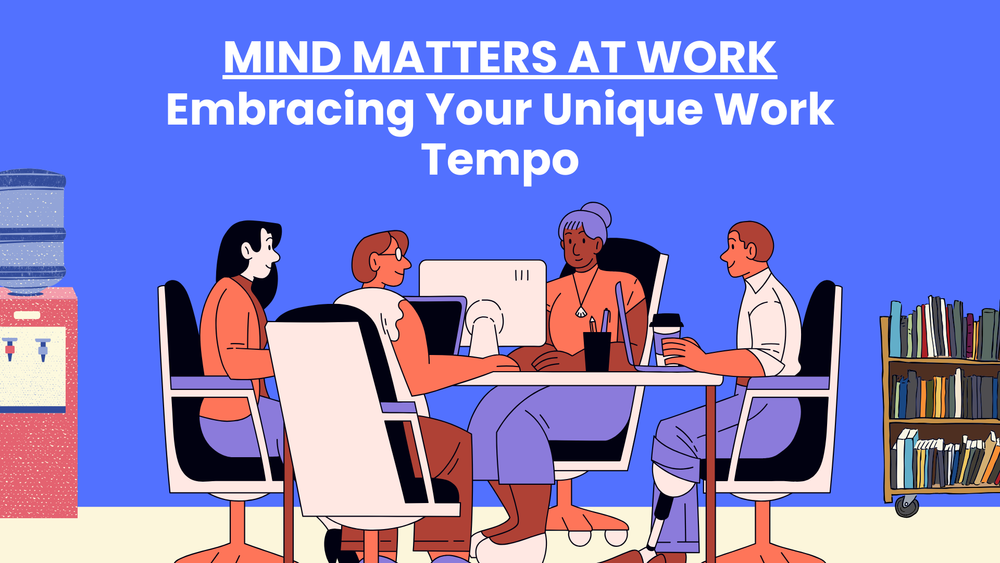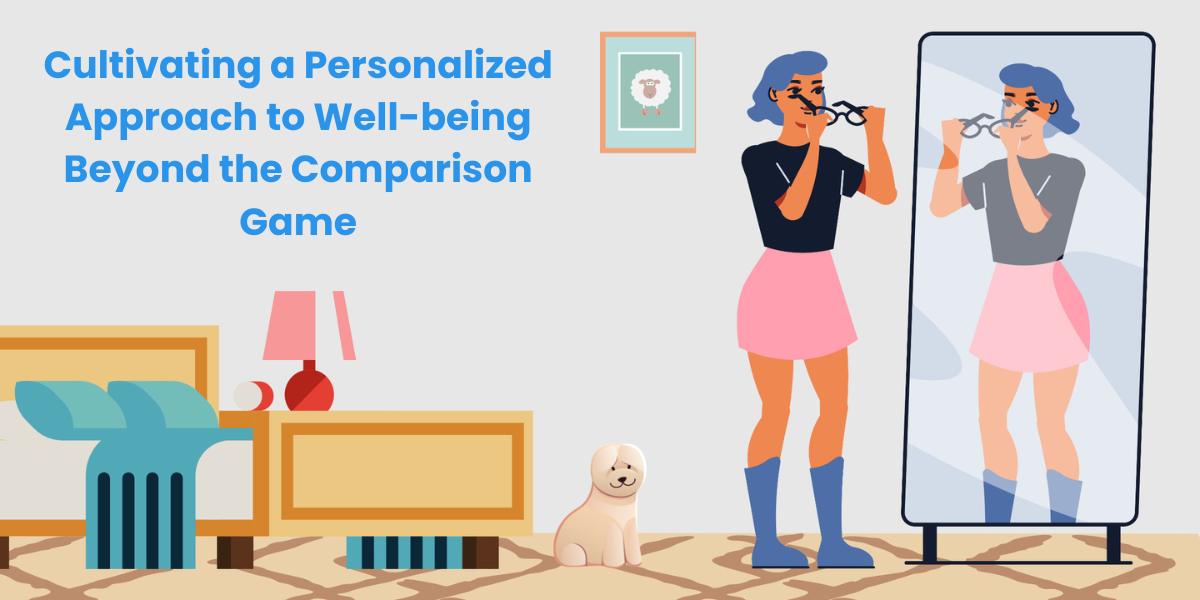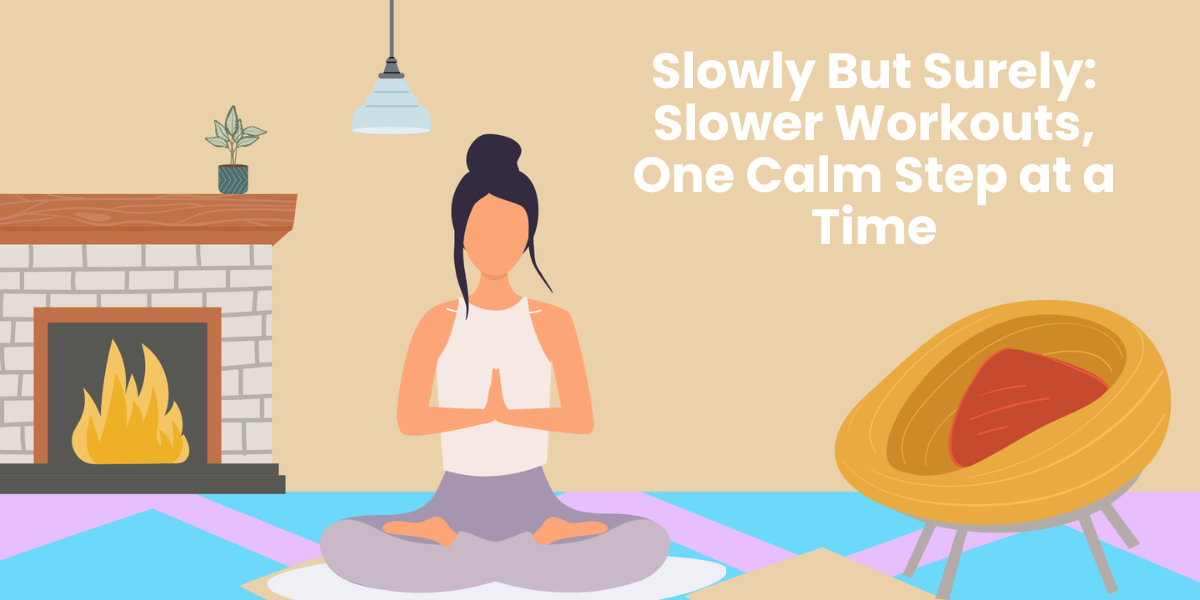Mind Matters at Work: Embracing Your Unique Work Tempo

Stay tuned to our latest news
“Embrace Your Pace” is more than just a phrase; it is a philosophy for individuals who march to the beat of their own drum. As the seasons transition from the fresh blossoms of April to the sunlit days of June, this ongoing RENPHO series will help to highlight the myriad ways one can embrace a life lived at their own pace.
Personal pace, or doing something at one's pace, refers to the unique speed and rhythm that works or is comfortable for an individual, allowing them to complete tasks at their own speed. As much as it is important to have in school, it is also essential in the workplace, as it helps employees find a balance between productivity and their well-being.
When employees work at their own pace, they could improve their overall job satisfaction, have the freedom to engage in deep work, and concentrate on tasks without distractions. It could also reduce stress levels, allowing individuals to maintain a healthy work-life balance.
How does one embrace their own pace at work?
Understanding Your Natural Work Rhythm

Do you know the proverb, “It’s better to take many small steps in the right direction than to take a big leap in the wrong direction, only to stumble backward"? It tells individuals to pursue their dreams little by little, instead of going for the entire goal in one go. However, everyone is unique, and we have our own paces, our own rhythms.
Working at one's own pace helps optimize productivity and avoids burnout. Here are some tips to effectively understand your work rhythm:
- Identify peak productivity periods: When working a traditional 9-5, there is no guarantee that you're working at peak productivity. Employees may be morning or evening people, and as productivity slumps are common in the workplace, it is important to pay attention to when you feel most energized and focused. Once you've determined the best time to work on complex tasks or projects that require intensive concentration, you could work more efficiently and achieve better results, instead of providing subpar output.
- Check for signs of burnout: Burnout, regardless of profession, can happen to anyone when exposed to high levels of stress. An employee that pushes his or herself too hard for extended periods can develop burnout, manifesting as physical and mental exhaustion, cynicism, and depression. It is important to support your body with quality sleep and a healthy diet, find creative outlets, and take regular breaks to allow yourself to rest and recover from a day of work.
- Become self-aware: Employees could routinely go through and understand their limits, strengths, and weaknesses to manage their workload more effectively. Having self-awareness of one's own capabilities helps in setting realistic goals and expectations, while avoiding overcommitment and unnecessary stress.
Setting Realistic Goals and Expectations

On the topic of self-awareness, setting realistic goals and expectations is one of the most important steps when working at your own pace. This ensures a healthy work-life balance while achieving professional success. How does one set realistic goals?
- Write down the ambition: You could start somewhere small such as getting to work on time, finishing a task before breaks, and improving your health altogether. Any goal is a goal and could make a change in your life.
- Think about the first thing you could do to start the process: Ask yourself what your first course of action would be in working towards your ambition, such as waking up at an earlier time, going on morning jogs before work, or eating healthier.
- Ensure the goal is achievable with SMART: Once you have your goal set, check if it is SMART or Specific, Measurable, Achievable, Relevant, and Timely.
|
Embracing Your Own Work Pace

To keep up with the constant demands and expectations of the workplace, employees should find strategies that allow them to work at their own pace without compromising productivity and maintain a healthy work-life balance.
Workspace personalization is not just about aesthetics, as it creates a work environment that caters to the employee — whether it's ergonomics, lighting, or noise levels. Craft a space that suits your preferences and enables you to concentrate on your tasks. For example, you could place a coaster for your mug or a desktop humidifier for a relaxing space. When workspaces are personalized, it aids in relieving anxiety and stress while working, promoting a more positive mood.
Every now and then, remind yourself to take breaks. According to The Wellbeing Thesis, microbreaks, lunchtime breaks, and longer breaks have shown to have a positive relationship with wellbeing and productivity — therefore boosting performance. Research found that detaching from work through breaks increases energy levels and decreases exhaustion. Chatting with peers, or social breaks, was also found to help create a feeling of relatedness, promoting enhanced recovery.
Moreover, it is still important to maintain a work-life balance, set boundaries, and prioritize self-care. Block some time off your calendar for activities outside of work, such as traveling with family or finding hobbies. A healthy balance leads to fewer health issues, reduced burnout, less overtime, and more engagement.
In addition, effective time management skills should come into play. Planning and prioritizing workload allows employees to work on their own pace. Take the time to assess your tasks and categorize them based on urgency and importance. Prioritizing workload aids in better understanding of which tasks need more time and energy, which tasks could be delayed, and which tasks could be delegated to other members of the team.
Renpho Health Tips
-

Cultivating a Personalized Approach to Well-being Beyond the Comparison Game
April 25, 2024
Read more >
-

Slowly But Surely: Slower Workouts, One Calm Step at a Time
April 23, 2024
Read more >
-

The Wellness of Waiting: How Delayed Gratification Can Lead to Healthier Choices
April 15, 2024
Read more >
-

An Introvert's Manifesto for Thriving at Your Own Rhythm
April 12, 2024
Read more >





